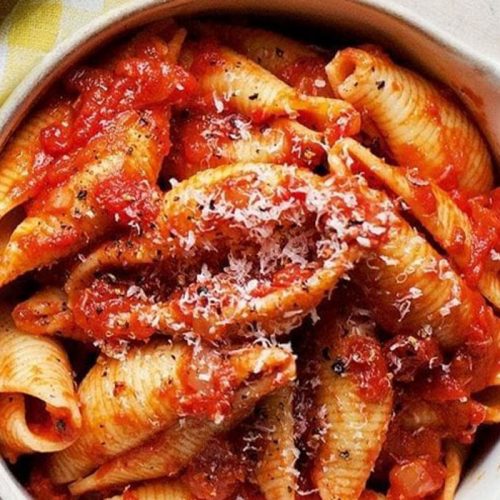
We all know we need fibre every day. But scientists researching our gut bacteria and colon health are learning more about the importance of getting not just enough fibre but also different types of fibre. HFG senior nutritionist Rose Carr catches us up on the latest research.
Fabulous fibre
Most of us associate fibre in our diets with the healthy functioning of our digestive system. Fibre also plays an important role in reducing our risk for colorectal cancer. What we may not realise, however, is that dietary fibre also plays a part in reducing our risk of developing cardiovascular disease and type 2 diabetes. And it’s also thought that a high-fibre diet can help us maintain a healthy body weight. There are so many reasons why fibre is good for us that it is surprising we still consume so little!
One name, many different types of fibre
Dietary fibre is the part of plant-derived carbohydrate that cannot be digested in the small intestine. Fibre can help speed the passage of waste products through our gut, reduce blood cholesterol and modulate blood glucose.
Soluble fibre dissolves in water to form a thick gel. This can happen during digestion. Insoluble fibre — what Granny would have called roughage — passes through to the large colon intact. Both soluble and insoluble fibre are fermented in the large colon to produce short-chain fatty acids which provide energy for the good bacteria in our gut.
While soluble and insoluble fibre are useful groupings, scientists look at different types of fibre in more detail. There are actually many different sub-types of fibre, and they are all important. Major types of dietary fibres include non-starch polysaccharides, resistant starches, indigestible oligosaccharides, inulin and galacto-oligosaccharides.
What happens if I don’t get enough fibre?
Small, hard stools, ie. constipation, can be an immediate indicator of a low-fibre diet (and an adequate intake of fluids and activity are essential as well). Apart from some discomfort, does it matter?
Good bowel habits can help prevent hiatus hernia, diverticular disease and haemorrhoids for starters. Constipation and diarrhoea are both signs our bowel is not as healthy as it could be and our bowel health also has wide-ranging consequences for our general health and immune system (see our feature Getting to know your gut for more information). A low-fibre diet is also one of the risk factors for one of the most common cancers in the world, colorectal cancer. The incidence of colorectal cancer in New Zealand, and our death rates from this disease, rank among the highest in the world.
The Australian paradox
Our Australian cousins have taken the advice to up their fibre intakes much more seriously than we have. Consuming just 15g fibre a day twenty years ago — similar to the current level in the US — the average Australian now consumes around 27g fibre each day. Although still a little short of recommendations, that’s much more than our average at 20g. Thanks to their higher intakes of dietary fibre Australians are probably enjoying more regular motions than the average Kiwi.
The Australian paradox is that despite their impressive increase in fibre intakes, their rates of colorectal cancer, just like ours, remain among the highest. Contrast this to black South Africans eating a traditional diet: their intake of total fibre is not as high as the Australians but they have very low rates of colorectal cancer. We could be forgiven for thinking the scientists have got it completely wrong. However, what we now know is that compared to the black South Africans, our Western diets are very low in a particular type of fibre known as resistant starch. The Africans traditionally cook a maize porridge which is often eaten cold. During the cooling process the structure of the starch in the maize changes to form resistant starch.
Resistant starch: A special type of fibre
Resistant starch cannot be digested and is fermented in the large colon. Dr Jane Muir, at Monash University in Australia, has been researching the role of carbohydrates in gut health for many years. She recommends we aim for 15-20g resistant starch each day as part of our total dietary fibre intake. Levels of resistant starch in modern processed foods are very low and a typical Western diet provides only around 5g.
So where do we find resistant starch? Legumes such as lentils, chickpeas or cannellini beans are a good source. Resistant starch is also found in whole grains including brown rice, cold cooked starches such as in a potato, rice or pasta salad and firm bananas. Increasing our intakes of resistant starch is a good thing to focus on but we need to remember that eating a combination of different types of fibre is essential for good digestive health.
How do we make sure we get enough of the different types of fibre?
Scientists tell us it is very difficult to accurately measure the amount of fibre and different types of fibre in foods. In fact, there are around 25 different ways to measure it which will all give different results! But if the bulk of our diet is based on getting a wide variety of whole foods, including legumes, we don’t really need to worry because we will be getting adequate amounts of different types of fibre.
So what’s the best diet for optimal gut health? It’s a diet based on vegetables and fruit, legumes and wholegrain cereals. It’s not new, it’s not particularly sexy, but it is so good for us.
Six ways fibre works
1. Delaying digestion and absorption
Fibre in food helps lower its glycaemic index (GI) so the carbohydrate is broken down to glucose and absorbed more slowly into the bloodstream. There is a great deal of evidence now that a lower-GI diet is healthier.
2. Lowering cholesterol
Soluble fibre dissolves in water to form a gel which binds with cholesterol and cholesterol-like substances within the gut and helps to prevent these from being absorbed. The gel also softens and adds bulk to our stools.
3. Balancing the bacterial species in the gut
Some non-digestible oligosaccharides change the balance of the gut microbes by stimulating the growth of Bifidobacteria, a group of bacteria thought to be beneficial to health.
4. Fermentation to produce short-chain fatty acids
These keep the cells lining the colon healthy by providing their fuel and promoting blood flow. They also improve the absorption of minerals, enhance fat and glucose metabolism in the liver, and are anti-diarrhoeal and anti-inflammatory.
5. Waste removal
Fibre promotes the elimination of waste through the colon by absorbing toxins and creating bulk to move them on through.
6. Speeding up transit time of waste
Fibre that remains intact during digestion and passes through to the large colon is used, with the water it absorbs, to add bulk to our stool. Bulk is healthy as this speeds up the transit time in the colon, keeping things moving.
Fibre does all of these things. However, not all types of fibre do each of these things and some do some tasks better than others.
We need a variety of high-fibre foods in our diet to get all the health benefits.
Tips to get a good balance of fibre in our day
At breakfast
- porridge from oats, quinoa, barley or other whole grains
- wholegrain cereal
- wholegrain bread
- add bran to cereal
- add LSA (linseeds, sunflower seeds and almonds), oats or chia seeds to a smoothie
For snacking
- whole fruit
- dried fruit
- nuts
- vegetable sticks such as carrots, celery or capsicum with hummus (made from chickpeas)
At lunch and dinner
- cold pasta or rice salad with lots of vegetables
- potato salad along with another vegetable salad
- brown rice — hot or cold
- try freekeh, a Middle Eastern grain high in resistant starch
- add lentils or canned beans (eg. chickpeas or cannellini beans) to salads, soups, mince and casseroles. (Tip: red lentils cook quickly or use canned no-added-salt lentils)
- canned Lite baked beans or homemade baked beans
- sprinkle seeds such as pumpkin, sunflower and sesame seeds on salads and vegetables
- always include a variety of vegetables
- if you have a dessert, choose one based on fruit
It’s a good idea to increase fibre intake over several weeks rather than a couple of days so the gut can adjust. The composition of bacteria in the colon will change with the increased fibre and help process the additional fibre. When we up our fibre intake it’s also a good idea to increase fluid intake.
Yikes! My low-FODMAP diet is limiting my fibre intake
Anyone following a low-FODMAP diet may have realised that the oligosaccharides (inulin and galacto-oligosaccharides) they aim to limit in their diet are actually different types of fibre. These are fermented in the large colon to produce gases. While reducing FODMAPs in the diet is helpful in reducing symptoms for some people with IBS, it’s probably not ideal to be on this diet long-term. In practical terms, consuming as many FODMAPs as can be tolerated is preferable to overly restricting FODMAPs.
www.healthyfood.com










